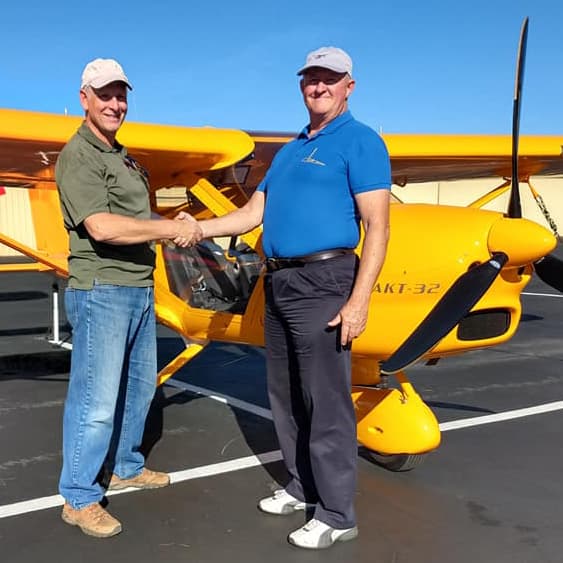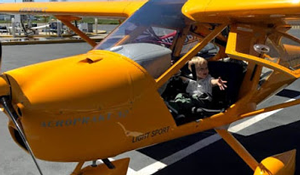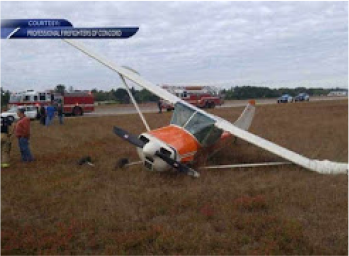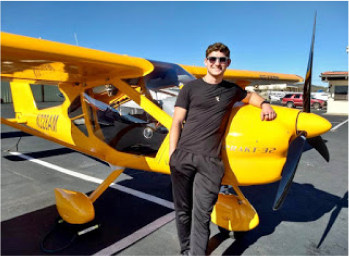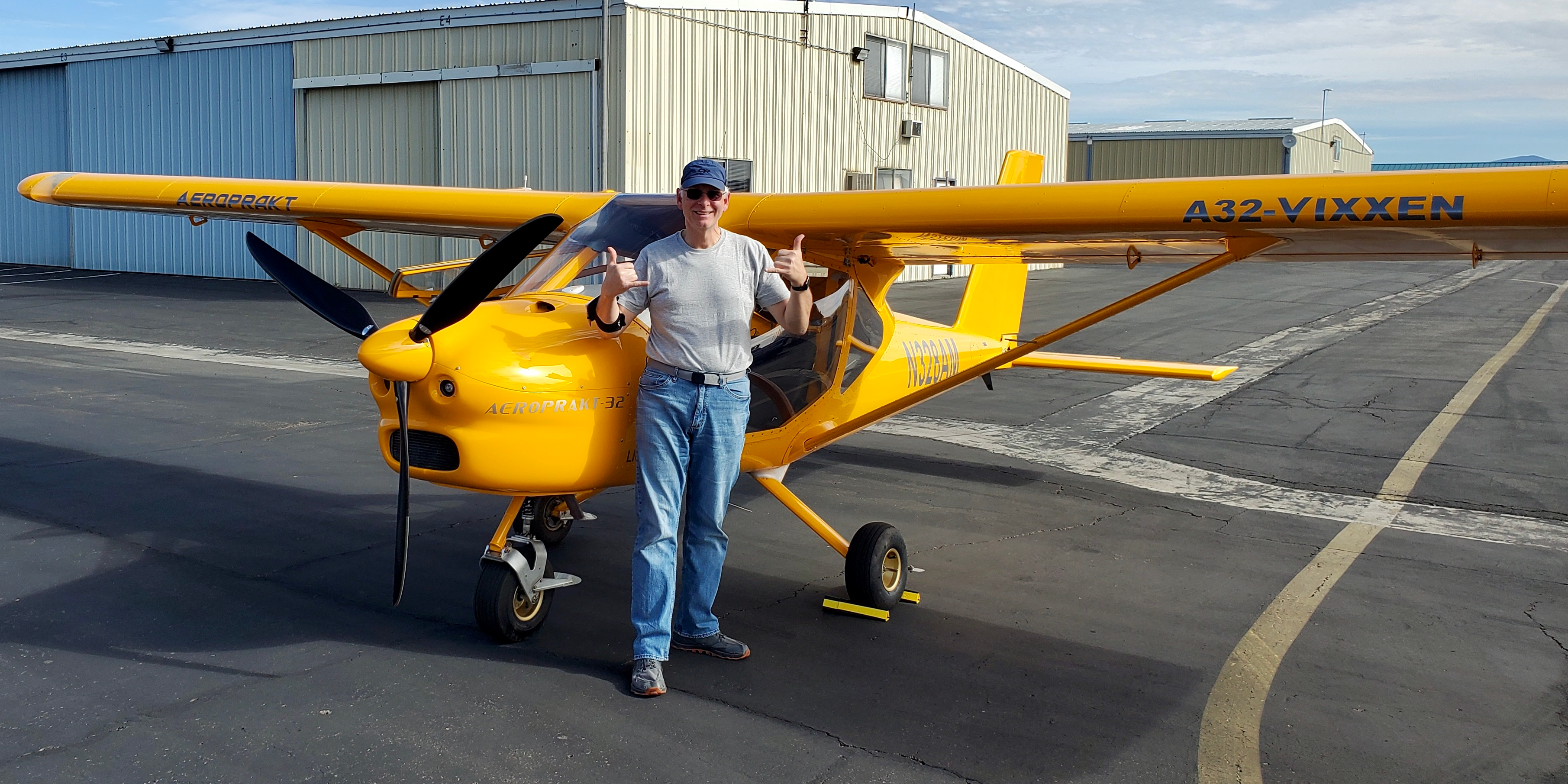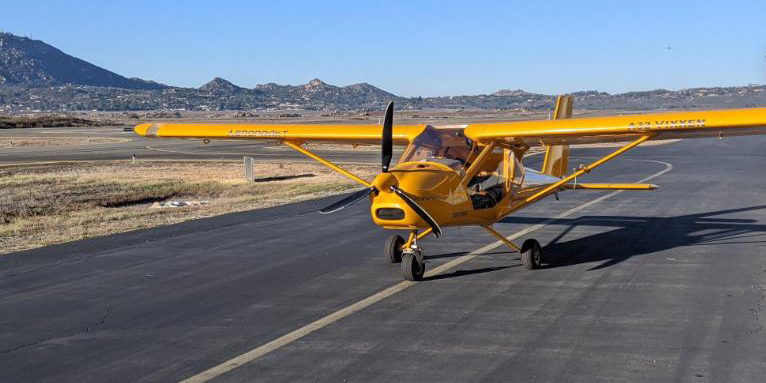A handshake is said to seal the deal while conveying trust, respect, balance and equality. When the handshake is followed by the handing over of a set of keys to a...
Why Short Landing Ability Wins the Grinsley
Being able to land on really short runways is a dream for most pilots and their airplanes.
To land a typical Cessna 172 the manual will say you’ll need something in the neighborhood of 1,300 feet of runway with many pilots preferring twice that distance (a half mile in total).
.png?width=398&name=image%201%20(5).png) If your preference is for the more powerful Cirrus aircraft, the manual requires more than 2,000 feet as your minimum and most pilots will look for runways offering 3,000 feet or more of available runway length.
If your preference is for the more powerful Cirrus aircraft, the manual requires more than 2,000 feet as your minimum and most pilots will look for runways offering 3,000 feet or more of available runway length.
Fly an Aeroprakt A32 Vixxen and you will...
be able to challenge runways just hundreds of feet long. Most Vixxen pilots, with a bit of practice, will regularly only need half the minimum distance a Cessna 172 would require.
Needing shorter runways means more flexibility getting down and safely back to Mother Earth.
Not only will you have runway to spare at a typical airport, you’ll also be able to fly to those out of the way shorter strips as part of your adventure; that’s a big plus for the Aeroprakt over the Cessna or Cirrus.
Of course, whether you’re piloting a Cessna, a Cirrus, or a bright yellow Aeroprakt Vixxen, speed control is the key. The Vixxen will set down at about ½ the speed of the Cessna or Cirrus and in this case, that means a much safer (because you’re slower) landing environment.
However, if you try to land the Vixxen at the same speeds you might use for the Cessna or Cirrus, you’re going to have real trouble as the Vixxen, at such higher speeds, will want just to fly, fly, and fly. And a pilot floating down the runway, passing over all that good and ready to use hardtop, will often try and “force” the plane down to the landing; almost always a recipe for disaster or at least a set-up for hopping down the runway like a kangaroo.
The key to a safe, smooth, and short landing in the Vixxen is speed control throughout your approach to landing. As Dan Johnson wrote in his review of the Vixxen for General Aviation, “I reduced power to 3,000 rpm, almost idle thrust, abeam my touchdown target and then began to retard speed, lowering one notch of flaps after we got in flap speed range (below 93 mph). On base leg I had both notches in and was monitoring my speed carefully … using 60-65 mph was fine on base turning final, but I moved it to 55 to 60 on short final and was ideally at 50-55 mph over the numbers.” Of course, always remember to carry a bit more speed in gusty wind conditions.
Such careful speed control at the manufacturer’s preferred setting, will net you a good landing in nearly any airplane. In an Aeroprakt Vixxen it will deliver a blissfully short landing roll every time. Coupled with a smooth flare to touchdown (a subject for another day) and both you and your passenger will be grinning ear-to-ear as you taxing off to parking.
About that picture:The World's Shortest Runway?
This is Roger Dulac's runway in Quebec (Canada) that measures 100-feet long by 12-feet. Roger operates his airplane from his gravel and sand driveway / parking lot, and he poured the concrete slab runway to keep gravel away from the prop with his extremely short take-offs.
Read On
- Soaring and floating like a bird through the air
- Gorgeous views of San Diego County compliments of huge...
Here we are in the midst of the new normal "stay-at-home" when I just had to make an "essential" flight and got to checkout the famed San Diego beaches along the way.
When learning proper takeoff procedures, one of my instructors always reminded me as we were lining up on the runway to advance the throttle smoothly and to feed in...
Ever wondered what it would be like to fly like an eagle?Well, Benjamin Pancarik of Escondido found out yesterday as he discovered light sport flying in the Aeropakt A32...
As an airplane owner, I am often asked if an airplane can be a moneymaker. The question usually arrives as an assumed positive, as in, "Wow, you rent out your...
Now that the Vixxen is back from its latest maintenance, I thought a quick note as to what work was done, is still upcoming, and what was asurprise, would be of...

